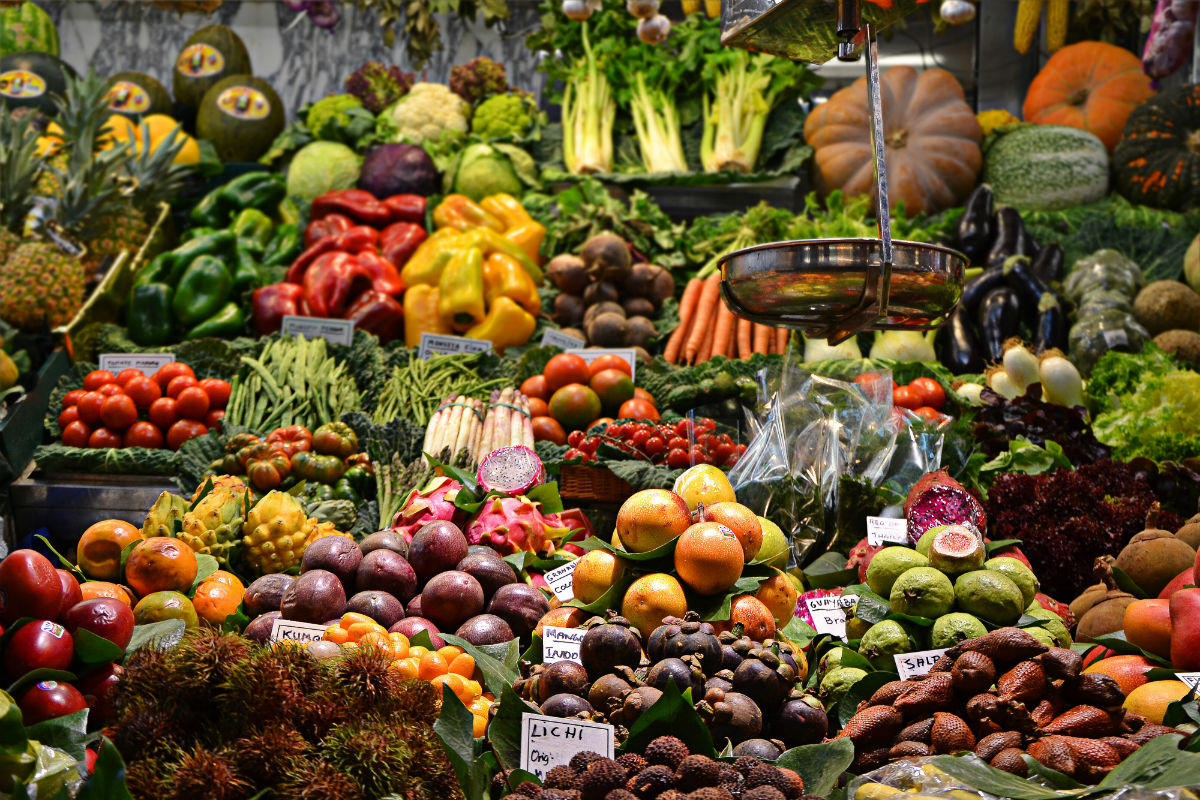Do you know what's at the base of the food pyramid for a healthier lifestyle? That's right – fruits and vegetables!
Eating these colourful and nutritious gifts from nature is an essential part of a balanced diet. Not only are they packed with vitamins and minerals, but they also provide crucial dietary fibre. Incorporating a variety of fruits and vegetables into your meals can help boost your immune system, be good to maintain a healthy weight, and reduce the risk of chronic diseases. So, let's dive into the importance of eating fruit and vegetables and discover the many benefits they offer us.
The Eatwell Guide has a huge section dedicated to these natural foods.
The push to consume more fruit and vegetables is a worthy one. These natural foods provide us with so many vitamins and minerals that help our bodies thrive. They are pivotal to our health and our body’s organs and processes.


Understanding Why Fruits and Vegetables are Important
Fruits and vegetables form the cornerstone of a balanced diet, offering a plethora of necessary vitamins, minerals, and antioxidants that are crucial for our general health. These plant-derived foods are not only abundant in fibre, which aids in maintaining digestive well-being, but they also play a pivotal role in diminishing the chances of chronic illnesses like heart disease, diabetes, and specific forms of cancer. By incorporating fruits and vegetables into our regular meals, we can fuel our bodies and minds, ensuring peak physical and mental functioning.
The Benefits of Following a Food Pyramid for Healthy Eating
The fruits and vegetables food pyramid is a comprehensive guide that helps us navigate the complex world of nutrition. By adhering to this visual depiction of the important food categories, we can guarantee that we are consuming a well-rounded and diverse diet that fulfils the requirements of our bodies. Here are a few reasons why this way of living is a good thing:
- Supports weight control and the
- Prevent illnesses
- Boosts our energy levels,
- Strengthens our immune system, and
- Improves our overall well-being
The fruit and vegetables section of the food pyramid offers a complete roadmap that covers a wide variety of plant-based foods, each boasting its own distinct nutritional composition. By familiarising ourselves with the various food groups present in this pyramid, we can make educated decisions and establish a balanced diet rich in essential nutrients. That sounds fantastic, doesn't it? Let's continue...

Exploring the Key Food Groups in Fruits and Vegetables
- Assorted Fruits: This classification covers an extensive selection of freshly-picked, frozen, canned, and dried fruits like apples, bananas, oranges, berries, and melons. Fruits are brimming with vitamins, minerals, and antioxidants that can help gratify our desire for sweetness in a nutritious manner.
- Verdant Leafy Greens: This group encompasses an assortment of nutrient-rich leafy greens such as spinach, kale, arugula, and romaine lettuce. These leafy greens are teeming with vitamins, minerals, and fibre, making them an indispensable part of a well-rounded diet.
- Starchy Vegetables: This category includes potatoes, corn, peas, and winter squash. These vegetables provide complex carbohydrates, fibre, and essential nutrients. They can be a wholesome substitute for refined grains and starchy foods.
- Non-Starchy Vegetables: This classification encompasses a varied selection of vegetables including broccoli, carrots, bell peppers, and tomatoes. These nutrient-rich foods are low in calories and high in fibre, vitamins, and minerals, making them an integral part of a balanced diet.
- Legumes: This group consists of beans, lentils, peas, and peanuts. They serve as excellent sources of plant-based protein, fibre, and a variety of essential nutrients. Introducing legumes into our diet is a wise choice for overall well-being.

Tips for Incorporating More Fruits and Vegetables into Your Diet
Incorporating a greater variety of fruits and vegetables into our daily nutrition habits can be a fulfilling and delightful journey. Here are some practical suggestions to help you get started:
- Embrace Diversity: Explore the different types of fruits and vegetables available to you and aim to choose a wide range of colours and flavours in your meals. This will ensure that you benefit from a diverse array of essential nutrients.
- Convenience is Key: Make it easy to incorporate fresh fruits and vegetables into your diet by preparing and storing them in a way that allows for quick and convenient access. For example, pre-cutting vegetables for snacks or keeping a bowl of washed and sliced fruit on your kitchen counter.
- Get Creative with Recipes: Experiment with new recipes and cooking techniques that showcase the natural flavours of fruits and vegetables. This can help you discover exciting and delicious dishes while making healthy eating more enjoyable.
- Include Them in Every Meal: Make it a habit to include at least one serving of fruits or vegetables in every meal, whether it's a salad, a side dish, or a refreshing smoothie. This ensures that you receive a consistent intake of important vitamins, minerals, and fibre throughout the day.
- Involve the Whole Family: Encourage your family members to join in the process of choosing, preparing, and savouring fruits and vegetables. By involving everyone, you create an atmosphere of shared responsibility and enjoyment towards maintaining a healthy lifestyle.
Remember, incorporating more fruits and vegetables into your diet is not only beneficial for your health but also adds vibrant colours, textures, and flavours to your culinary experiences. So why not embark on this journey towards a healthier and more enjoyable way of eating?
You can find out about the role of fats and oils and dairy by reading the other articles in this series.

Teaching Children About the Fruits and Vegetables
Instilling healthy eating habits in children plays an important role in ensuring their overall health and wellness in the long run. By introducing the concept of the fruit and vegetable food pyramid to young ones, we can empower them to make informed decisions and cultivate a lifelong love for nourishing foods. Engage them actively in the process of choosing, preparing, and relishing a diverse range of fruits and vegetables, transforming it into an enjoyable and interactive educational experience.
Recipes and Meal Ideas
To help you put the principles of the different foods into action, we have compiled some delectable and nourishing recipe suggestions:
- Grilled Chicken with Leafy Greens and Roasted Vegetables: Begin with a foundation of mixed greens, such as spinach and kale, and enhance it with roasted bell peppers, zucchini, and onions. Complete the dish with grilled chicken for a meal packed with protein.
- Fruit Smoothie Bowl: Blend an assortment of fresh or frozen fruits, including berries, bananas, and mangoes, and top it off with chopped nuts, seeds, and a sprinkle of granola for a satisfying and nutrient-rich breakfast.
- Stuffed Sweet Potato with Quinoa and Black Beans: Bake a sweet potato and fill it with a flavourful combination of cooked quinoa, black beans, diced tomatoes, and an array of spices.
- Lentil and Roasted Vegetable Stew: Simmer a hearty stew consisting of an assortment of roasted vegetables like carrots, potatoes, and cauliflower, along with lentils and a medley of aromatic herbs and spices.
- Yogurt and Honey Fruit Salad: Mix together a vibrant assortment of fresh fruits, such as strawberries, kiwi, and pineapple, and serve it with a dollop of plain Greek yogurt and a drizzle of honey for a refreshing and delectable treat.
These recipes are not only delicious but also incorporate a variety of essential nutrients from fruits and vegetables. By including these dishes in your diet, you can enjoy the benefits of a balanced and wholesome eating plan. So why not try these recipes today and embark on a journey towards healthier living?















